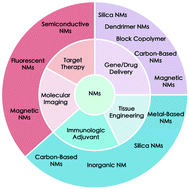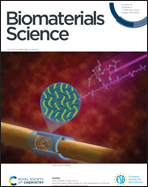Insights into the epigenetic effects of nanomaterials on cells
Abstract
With the development of nanotechnology, nanomaterials are increasingly being applied in health fields, such as biomedicine, pharmaceuticals, and cosmetics. Concerns have therefore been raised over their toxicity and numerous studies have been carried out to assess their safety. Most studies on the toxicity and therapeutic mechanisms of nanomaterials have revealed the effects of nanomaterials on cells at the transcriptome and proteome levels. However, epigenetic modifications, for example DNA methylation, histone modification, and noncoding RNA expression induced by nanomaterials, which play an important role in the regulation of gene expression, have not received sufficient attention. In this review, we therefore state the importance of studying epigenetic effects induced by nanomaterials; then we review the progress of nanomaterial epigenetic research in the assessment of toxicity, therapeutic, and other mechanisms. We also clarify the possible study directions for future nanomaterial epigenetic research. Finally, we discuss the future development and challenges of nanomaterial epigenetics that must still be addressed. We hope to understand the potential toxicity of nanomaterials and clearly understand the therapeutic mechanism through a thorough investigation of nanomaterial epigenetics.



 Please wait while we load your content...
Please wait while we load your content...